Inside China’s Giant AGI Wiki
Where there's everything but AGI
Zilan Qian is a fellow at the Oxford China Policy Lab and an MSc student at the Oxford Internet Institute.
This “AGI Bar” recently opened in Shanghai, where people openly poke fun at the hype surrounding AGI by stating that this bar is “all about bubbles.”
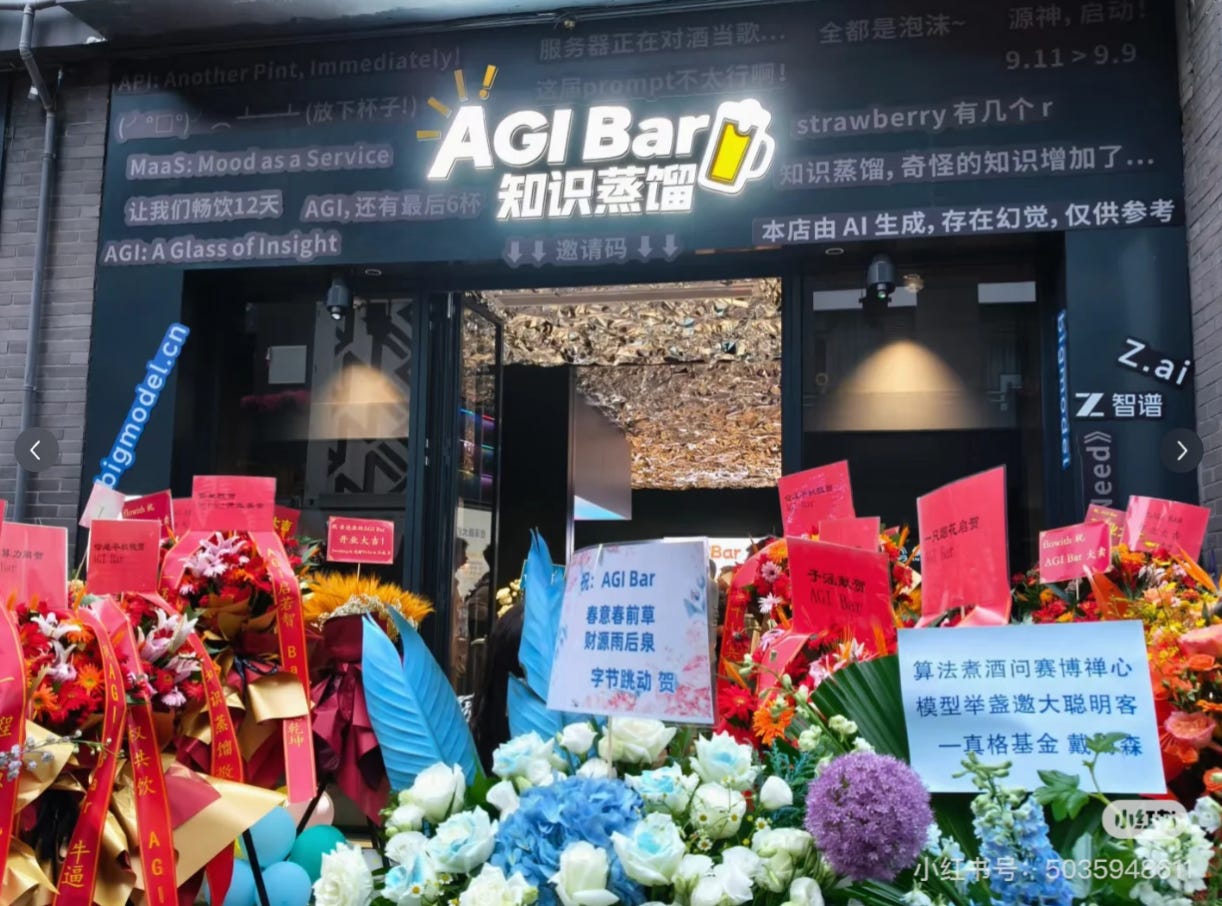
Not many people would point to this bar and say that China is racing towards AGI. Otherwise, the U.S. has zero chance of winning, because AGI is diffused to even bars in China. AGI is a buzzword for business in this context, period.
This is the consideration needed for people who want to know whether China is taking AGI seriously. Before you ask anyone who works on China and AI how AGI-pilled China is, ask yourself two questions: what do you mean by AGI, and who do you mean by China?
This post provides one piece to the picture by looking into a giant AGI wiki made by an open-source community in China. As this piece will show that, for AI hobbyists in China, “AGI” stands for Western tech aura and a desire for quick money.
What is “Way to AGI”?
Created in April 2023, the “Way to AGI” wiki is a collaborative knowledge hub hosted on the Bytedance-developed platform Feishu 飞书 (known internationally as Lark). It functions much like a shared giant Notion workspace — users can upload documents,1 create events, and leave comments on each other’s posts.
Since its launch, the wiki has attracted over 2 million unique visitors and generated 4.5 million total views for its front page. For context, the actual Wikipedia page on “artificial general intelligence” received about 2.1 million views globally during the same period.
The wiki is maintained by the Way to AGI community, an open-source AI collective boasting 8 million members interested in AI and 200,000 active developers,2 according to data published on its community forum. While slightly smaller than the largest AI-focused subreddit, r/ChatGPT (11.2 million members), it far exceeds r/OpenAI (2.5 million members) and the r/agi subreddit (82,000 members)3. The community appears to receive implicit support from tech companies, notably ByteDance — which owns both the Feishu platform and Coze, an AI app frequently discussed on the wiki. It also claims to form collaborations with other tech organizations and AI startups like Alibaba, Huawei, Tencent, Zhipu AI, and Moonshot AI.4
Driven by the belief that “AI will reshape the thinking and learning methods of everyone, and bring them unprecedented powers,” the group shares a wide range of AI-related resources on this wiki as part of its collective journey — the “way to AGI.”
Or so they believe they are. This is a “Way to AGI” if and only if the following formula holds:
1. AGI = Silicon Valley
“When you look long into an abyss, the abyss looks into you.”
The AGI community may not be AGI-pilled, but they are definitely Silicon Valley-pilled. Discussions, learning paths, and citations overwhelmingly reference Western, especially Silicon Valley, sources. “AI leaders”, recommended podcasts, and must-listen talks come predominantly from the other side of the Pacific Ocean.
Proof 1: Silicon Valley > Nobel/Turing Prize > Chinese CEOs >> Musk: Ranking the AI leaders
The wiki has a “top AI leader” leaderboard, which is regularly updated to include the top voices of what are perceived as “AI leaders” worldwide.5 On this board, Silicon Valley dominates by a landslide. Satya Nadella (Microsoft), Jensen Huang (Nvidia), Jeff Bezos, and Sam Altman lead the rankings, with Stanford’s Fei-Fei Li placed even higher than the three canonical AI “godfathers” — Geoffrey Hinton, Yann LeCun, and Yoshua Bengio.
The first China-based figure on the leaderboard is Robin Li 李彦宏, Baidu’s CEO, ranked ninth (Times AI 100 2023). His high position is somewhat surprising, given that ERNIE, Baidu’s flagship LLM, isn’t considered China’s strongest model. But Baidu has been an OG player in China’s AI ecosystem, investing in research long before the current LLM wave. It has also invested in full-stack AI development, including the recent open-source AI platforms PaddlePaddle 5.0 and Baige 4.0.
Other Chinese names on the list include:
Liang Wenfeng 梁文峰— CEO of DeepSeek (Times AI 100 2025)
Zeng Yi 曾毅— Professor on AI ethics, Chinese Academy of Sciences (Times AI 100 2023)
Wang Xingxing 王兴兴— CEO, Unitree Robotics (Times AI 100 2025)
Chen Tianshi 陈天石— CEO, Cambricon Technologies (AI chips)
Xu Li 徐立— CEO, SenseTime
Liu Qingfeng 刘庆峰— CEO, iFlytek
He Kaiming 何恺明— MIT Professor
In total, seven people from China made the top 26 list compiled by Chinese AGI watchers themselves, with mostly CEOs from private tech companies, and several do not explicitly focus on frontier AI research. The list is likely also heavily influenced by Western rankings, as at least 23 of the 26 have appeared in the Times 100 AI rankings during 2023-2025. (
’s Metis list does not appear to be an influence…). Profile photos of Clem Delangue and Marc Raibert are also directly taken from Times 100 AI 2023. However, the latest updated date (July) is before the release of Times 100 AI 2025, so the ranking foresaw Liang Wenfeng and Wang Xingxing’s debut on the 100 AI list.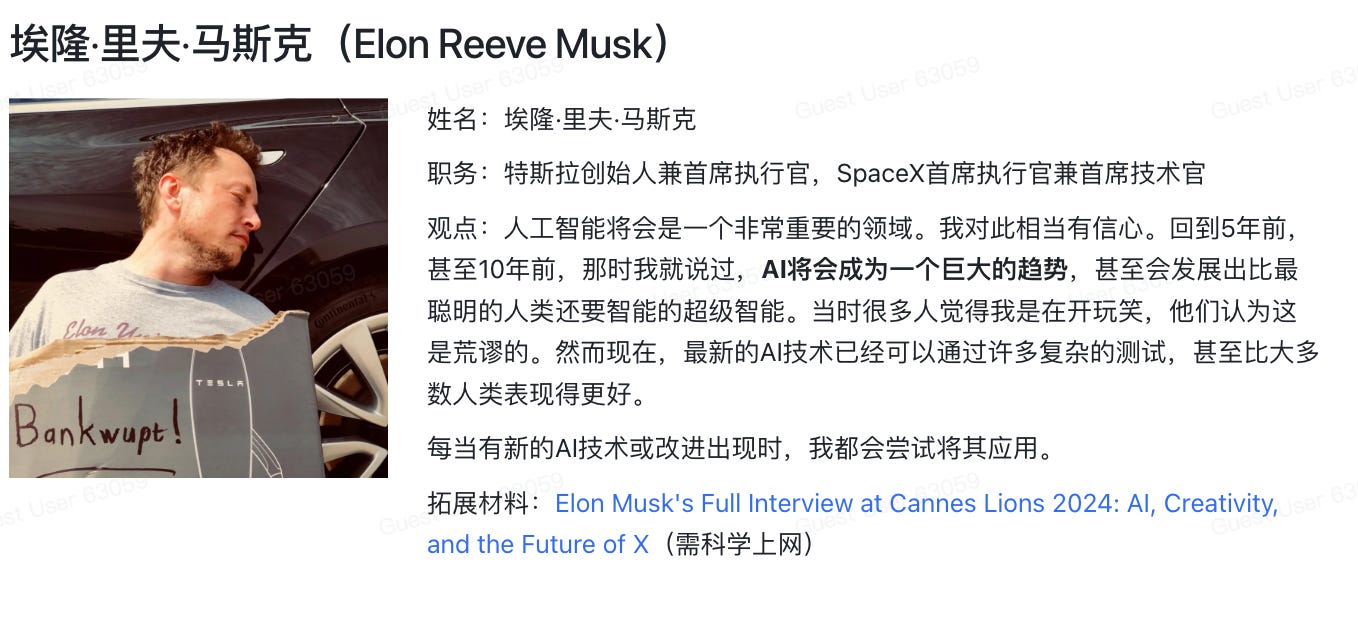
Despite many of these “leaders” being AGI-pilled, the ranking itself is not. With each leader having one selected quote to highlight their beliefs in AI, only two of the 26 selected quotes discuss AGI. Others focus on AI’s commercial promise, industry potential, and future trends. For instance, the selected quote from Liang Wenfeng, likely one of the most prominent voices in China advocating for AGI, is about open source as a strategy for both commercial value and brand reputation.
Proof 2: Commercial Success > Technical Depth >> AGI Research: Curating Western AI Voices
While hero-worshipping Silicon Valley leaders might be dismissed as superficial fandom, the community’s choice of information sources reveals deeper structural biases.
The section of “recommended foreign information outlets” has 129 sources, with 24 starred as must-read recommendations. Stratechery tops the list, while Lex edges out Dwarkesh. Most of the recommended sources have deep Silicon Valley associations, with one-third focusing on investment. The rest are C-suite executives or top researchers from big-name tech companies like OpenAI, Google, and Nvidia. Although some of the figures from big tech are AGI-focused, the list itself does not appear to be curated for AGI expertise. Rather, the even distribution of top profiles from big tech, mixed with prominent VC voices, reads more like a collection of Silicon Valley’s most commercially successful figures.
When we zoom out to the full list, the AGI flavor dissipates further. Among the remaining 105 sources, approximately 25-30% focus on investment, while 35-40% feature key figures from big tech companies and AI startups. About 15-20% come from U.S. universities, predominantly California institutions like Stanford, UC Berkeley, and Caltech. Around 10% consists of journalism and media outlets covering Silicon Valley and venture capital culture, while only a handful represent more independent technical sources like Stephen Wolfram, Nathan Lambert, Lex Fridman, Sebastian Raschka, and SemiAnalysis.6
Out of 129 total sources in a wiki titled “Way to AGI,” only three are explicitly AGI-focused: Eliezer Yudkowsky (founder of MIRI and LessWrong), Ben Goertzel (who helped popularize the term AGI), and John Schulman (chief scientist at Thinking Machines Lab and co-founder of OpenAI), with perhaps two others (Demis Hassabis and Ilya Sutskever) operating in AGI-adjacent territory. Thus, if one wants to “study AGI” through these sources, they are probably learning how big names in Silicon Valley think about AI. And while Silicon Valley thinks about AI in many ways, the most appealing one to this community seems to be how AI can be used to make money.
2. AGI = Quick Money Knowledge:
But emulating Silicon Valley success requires significant time and capital investment. For users seeking faster returns, the wiki pivots from Western voices to Chinese practice: offering step-by-step guides for building and monetizing AI products domestically. Eager novices come here for quick profits, while the “AI pros” they aspire to become are simultaneously seeking to profit from them.
Step 1: Learn just enough
Following the “syllabus” of this wiki, the first step is an introduction to AI, where it uses “what is ChatGPT…and why does it work” as a basic guide. From there, you then learn how to install and subscribe to ChatGPT (step-by-step from how to register a Google account to how to add your credit card, and of course, using a VPN7). There are seven “must-read” entry-level documents, six of which are Chinese translations of English sources, from the book “What Is ChatGPT Doing … and Why Does It Work?” to articles explaining transformer, stable diffusion, and diffusion models for video generation. The only original content is the seventh section, “Easily Understand 20 AI concepts,” which uses only two or three sentences in Chinese metaphor to explain each concept related to AI, from the chain of thought to the chatbot arena.
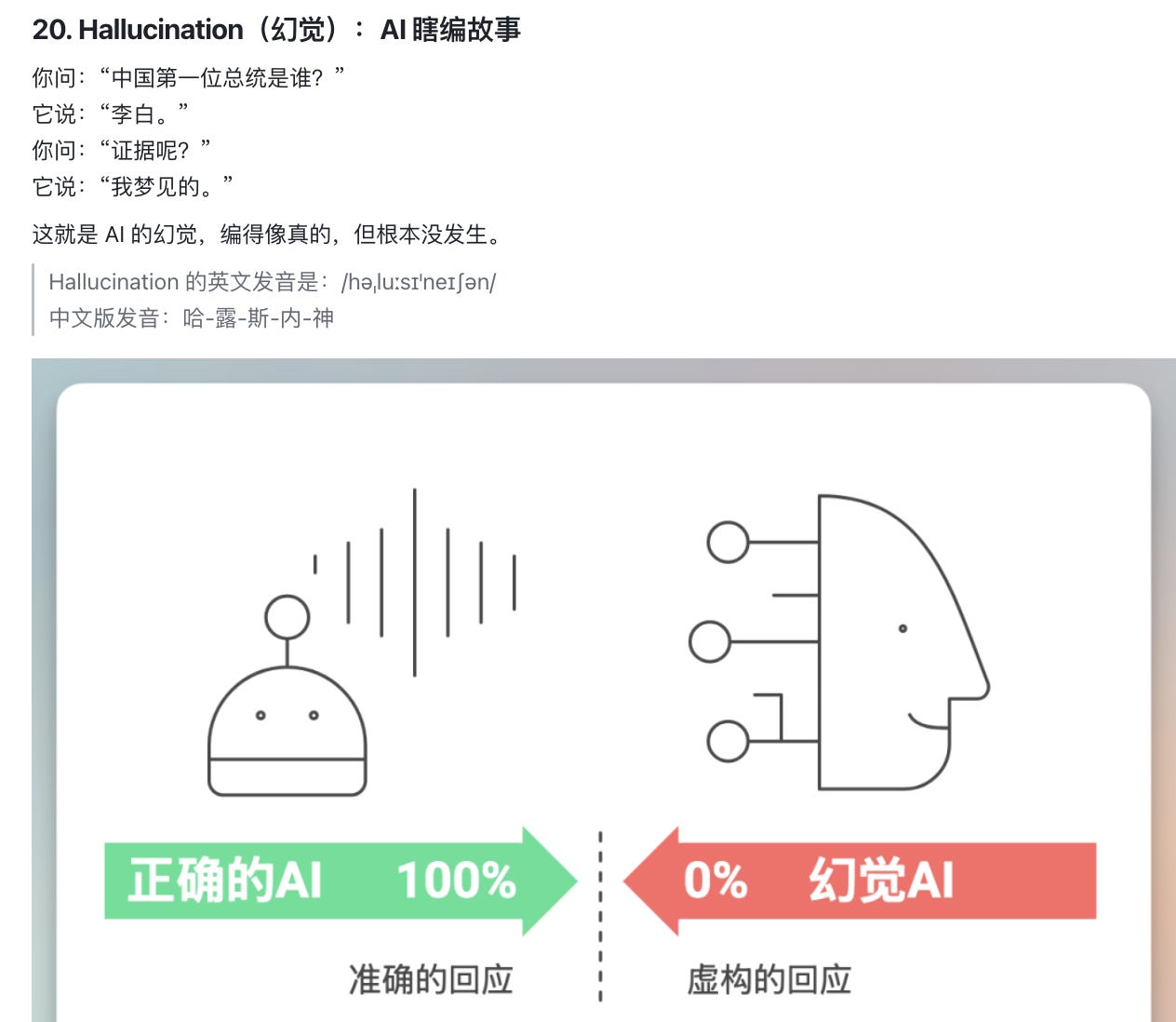
Not every introductory content is that introductory, but they are definitely “quick to learn” and extremely “practical”. You can master “Python + AI Without Coding Experience in 20 Minutes,” or know how to “gather LLM Data” through a 400-word article. For some reason, knowing how to select the best GPUs for model reasoning through comparing 38 kinds of Nvidia’s chips, including the H100 and A100, is also categorized as “entry-level content.”
Step 2: Developing “skills”
After (supposedly) mastering these “introductory” concepts, you can then dive into area-specific learning: AI agents, AI drawing, AI video, AI music, AI character + audio combination, AI 3D, ComfyUI workflow, or AI coding. Let us take “AI agents”, which seems to be one of the trending focuses for developers on their way to AGI now. Here, you will start with a Chinese translation of Maarten Grootendorst’s A Visual Guide to LLM Agents.
Then you will read guides on how to create your own simple “AI agents” without any coding through ByteDance’s Coze platform by only prompting a few lines of description of the agent’s characteristics. The guide will not teach you to create the next autonomous system that can navigate complex real-world tasks. Instead, it mostly shows you how to build AI chatbots that act like a language teacher, or an AI workflow that generates outreach emails based on company profiles.
Interested in building, but have no idea what to build? There are loads of examples and analyses showing you the potential of integrating these “AI agents” into different real-life scenarios, as well as analyses of what’s trending in the AI agent market right now. Here, AI chatbots, workflows, and agents literally mean the same thing. Participation matters more than precision under the buzzing excitement of AGI.
Step 3: Practice in contests
After learning how to create your AI “agent”, you can participate in various “Agent co-learning pop-up contests (智能体共学快闪比赛)” to exchange with other people about how to build better bots/agents. Some smaller contests and workshops usually range from a few hours to a day online, with participants entering their own “agents” and experienced developers as judges to see who the winners are. Winners of these small skill contests receive a virtual certificate of “the coolest AI agent.”
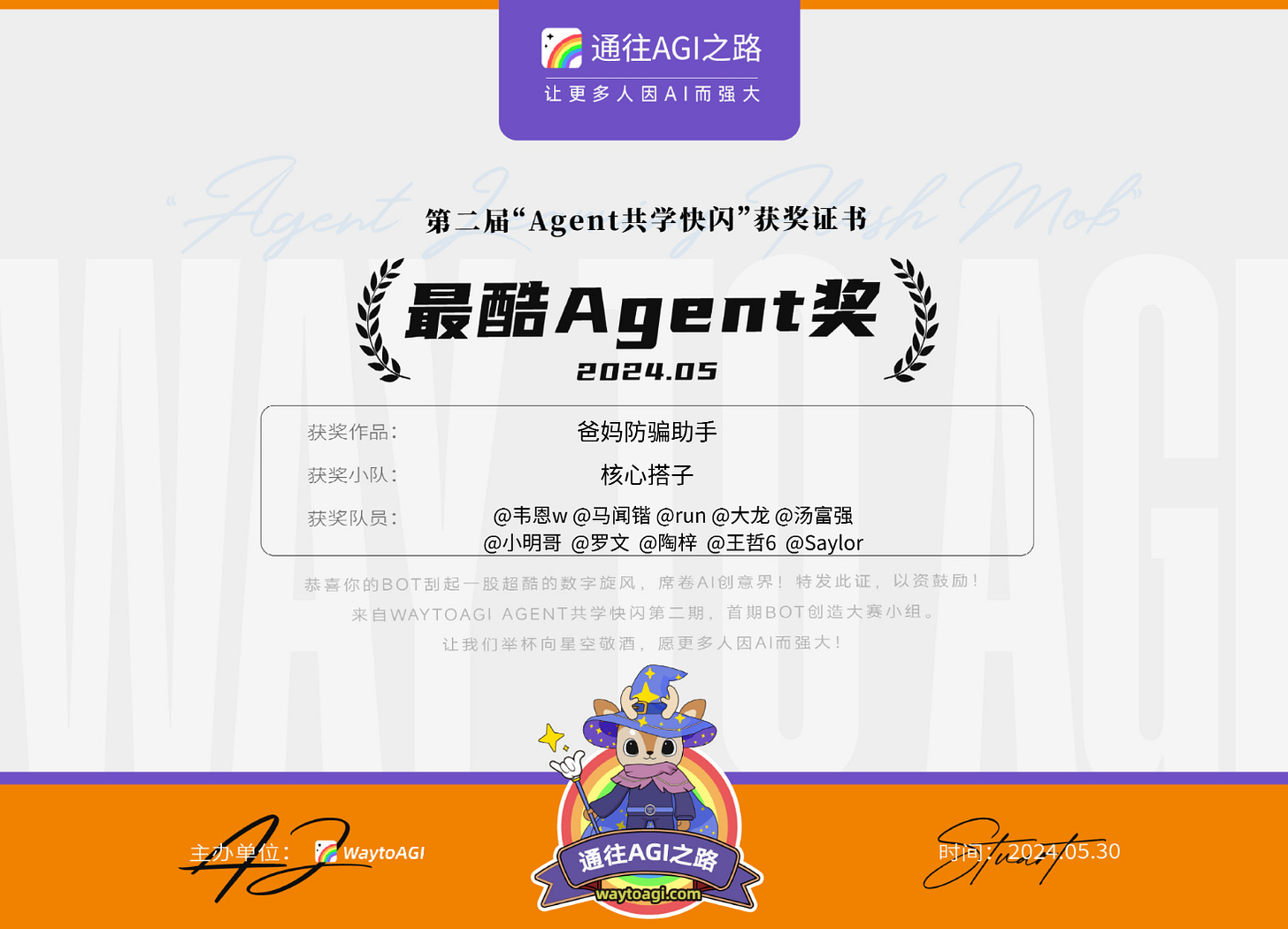
Meatier contests also exist, such as the “AI Agent Olympics 2025.” This “global” contest was co-hosted by Rednote, Weibo, Z.ai (which builds the frontier LLM GLM-4.5), and flowith.ai, with “Way to AGI” as one of the guest collaborators. Branding itself as “the first AI agent creation contest in 2025 worldwide,” the contest offers winners monetary awards (15000 RMB, or about US$2100) as well as social media exposure (via Weibo and Rednote). Despite sponsorship from Z.ai — the only AI startup in China openly claiming to be interested in AGI besides DeepSeek — and “Way to AGI,” there is no single mention of “AGI” on the contest website. Instead, the contest’s organizers state that “the rights to intelligence (智能) should not belong to any corporation, but instead should belong to a community of mankind (人类共同体),” with the last phrase strikingly similar to the CCP’s diction “a community of shared future for mankind (人类命运共同体).”
Don’t expect to see some crazily AGI-pilled individuals or the next DeepSeek founder in this contest. According to the bios of group members published on the platform, your peers will likely have some professional background related to AI, perhaps as a prompt engineer, as a product manager at a big Chinese tech firm, or as a full-stack developer. But you will also likely see people who were previously working as graphic designers, visual editors, or real estate agents — jobs that are very susceptible to AI replacement and were hit hard by China’s economic crisis — asking to form groups for related competitions. The poster of the AI Agent Olympics 2025.
Step 4: Believe that you can monetize your agents, while actually being monetized yourself
The way to AGI may be important, but perhaps the way to money is more important. The final step tackles the question of how to quickly monetize your new knowledge. Massive materials on product management are available in this section: how to understand and create demand for agents, where AI agents integrate into companies’ workflows, and experiences shared by so-called “AI agent product managers.” However, even with this general knowledge, there is still a real gap between your immature “AI agents” and AI products that can actually earn money.
There are many “AI pros” who first offer some free learning materials claiming to fill that gap. They will share some introductory content that showcases the great potential of the AI agent market and how easy it is for people with no background to make a profit. Later, they introduce paid core lessons that they argue offer “systemic structure, professional guidance, personalized plans, and feedback” for more efficient learning. Effectively, this so-called “open-source AGI community” becomes the first step for some people to hook novices into their closed-source AI coaching business.
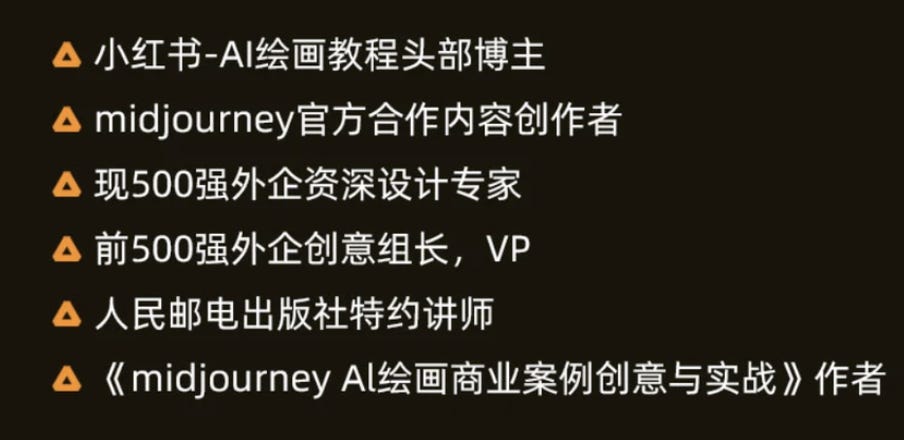
For example, in the AI Agent co-learning section, one member “shares” a piece of great paid content she “recently came across” (she is likely the person who runs the paid course). The screenshot below is how she justifies having paid for lessons (up to 5000 RMB/700 USD) in the open-source community: “It is like exercising in your home or going to the gym for guidance. Different people have different demands. The open-source community offers a wealth of resources suitable for disciplined self-learners. Recently, there have been many new entries to this community, and everyone is asking if there are suitable entry-level courses. Compared to learning from the text in the wiki, most people prefer the teachers to teach step-by-step.”
3. AGI ≠ Deep and Grand Knowledge: The Abandoned Projects
The emphasis on quick monetization comes at a cost. Buried beneath the layers of get-rich-quick content lie the remnants of more ambitious intellectual projects, which now serve as evidence of the roads not taken on the way to AGI.
AGI≠ AI Research
This community did attempt serious scholarship. Early projects included comprehensive translations of Google DeepMind research papers, philosophical explorations tracing the concept of “agent” back to ancient Greece, and an ambitious database cataloging AI agent papers from research groups worldwide, complete with translated Chinese abstracts.
But these initiatives couldn’t compete with monetized content for sustained attention. The AI agent paper database, launched in mid-2023, aimed to index AI agent research papers, provide reviews, and translate English abstracts into Chinese, but was abandoned by December 2023.
AGI ≠ AI Governance
Another abandoned project is the “Global AI Law Handbook (全球AI法规手册).” Originally conceived as an ambitious project to track, summarize, and translate AI-related legislation worldwide, it ceased updating Chinese regulations in mid-2024 and coverage of other jurisdictions by late 2023. Lost within its archived pages are translations of significant policy documents: the official EU AI Act interpretation from 2023, the UK Parliament’s pro-innovation AI regulation framework, Biden’s AI safety and security standards, and the Blueprint for an AI Bill of Rights. Some of these regulations remain active today; others, like the project itself, have been abandoned.
The handbook section has since pivoted toward narrower, more commercially oriented content — focusing on practical AI copyright guidance in China, including analysis of AI-generated artwork copyright disputes, while increasingly hinting at paid legal consultation services for users.
AGI ≠ AGI: the missing debate
Perhaps the most telling irony of this massive “AGI wiki” is what’s conspicuously absent: any serious discussion of AGI itself. Among hundreds of documents covering everything from GPU comparisons to monetization strategies, only two articles specifically address AGI as a concept — both written by the same author reviewing industry trends in 2023 and forecasting those in 2024.
The 2023 review reveals the community’s priorities starkly: the author spent literally zero percent of the text explaining what AGI actually is, and dedicated one brief section to “the Road to AGI (迈向AGI之路)”, mainly to forecasting GPT-5’s 2024 release and near-AGI capability (both did not happen), synthetic data training, and emergent behaviors. Then he dives into five detailed sections on development trends and business opportunities.
The 2024 forecast still devotes its main content to analyzing business and investment trends in AI products. After devoting 75% of the article to business trends and 20% to geopolitics, the author finally begins to discuss how actors might control and monopolize AGI technology. However, this discussion ends up going nowhere, with the author pointing out how individual voices are increasingly unheard under grand narratives put forward to celebrate the promise of AI. “I don’t want to talk more about the problems of AGI, because there is no point simply talking about this problem.”
This article captures the irony of “Way to AGI” well. Even though this wiki is titled “Way to AGI,” serious analyses of AGI are packaged in massive amounts of business buzzwords to attract attention. Only glittering investment bubbles and Western tech jargon can survive along the way to AGI, while more serious learning finds no way out.
Rather than leading to AGI, this wiki serves as a way for individuals to feel empowered and hopeful by engaging in AI discussions driven mostly by business interests. The motivation that drives many to this platform — the economic anxiety from AI disruption and China’s macroeconomic recession — gets buried beneath the promise that “AI will reshape the thinking and learning methods of everyone, and bring them unprecedented powers.”
The deeper paradox is: while “Way to AGI” promises to empower people through AI and make the path to AGI accessible to everyone, the only serious discussion of AGI feels profoundly disempowered. The community’s only AGI analysis retreats from complexity and laments powerlessness in the face of larger forces. To some extent, this AGI wiki is similar to the AGI bar, where people indulge in bubbles and avoid reality. Perhaps only by avoiding serious engagement with AGI itself can people maintain the promise and excitement that AGI represents. The moment AGI becomes real, with its implications for power, control, and human agency, the bubble begins to burst.
Many documents were originally published on WeChat.
However, this figure should be interpreted with caution. The community’s definition of ‘active developers’ likely includes users who create AI-generated content (videos, audio, images) and those who use no-code/low-code AI tools, rather than exclusively traditional programmers.
Data obtained in September 2025.
It is likely that these relationships are not formal “collaboration” per se, but more informal and minor associations like sponsoring one event hosted by the community.
There is no clear evidence of how the ranking works. It is likely to complied and updated by a few original founders of this wiki.
Initial analysis conducted by Claude with some human double check from me.
Using a credit card online might seem like a basic skill for most Westerners, but it is not often encountered in China. People usually use other digital payment methods, mostly commonly scanning QR codes.

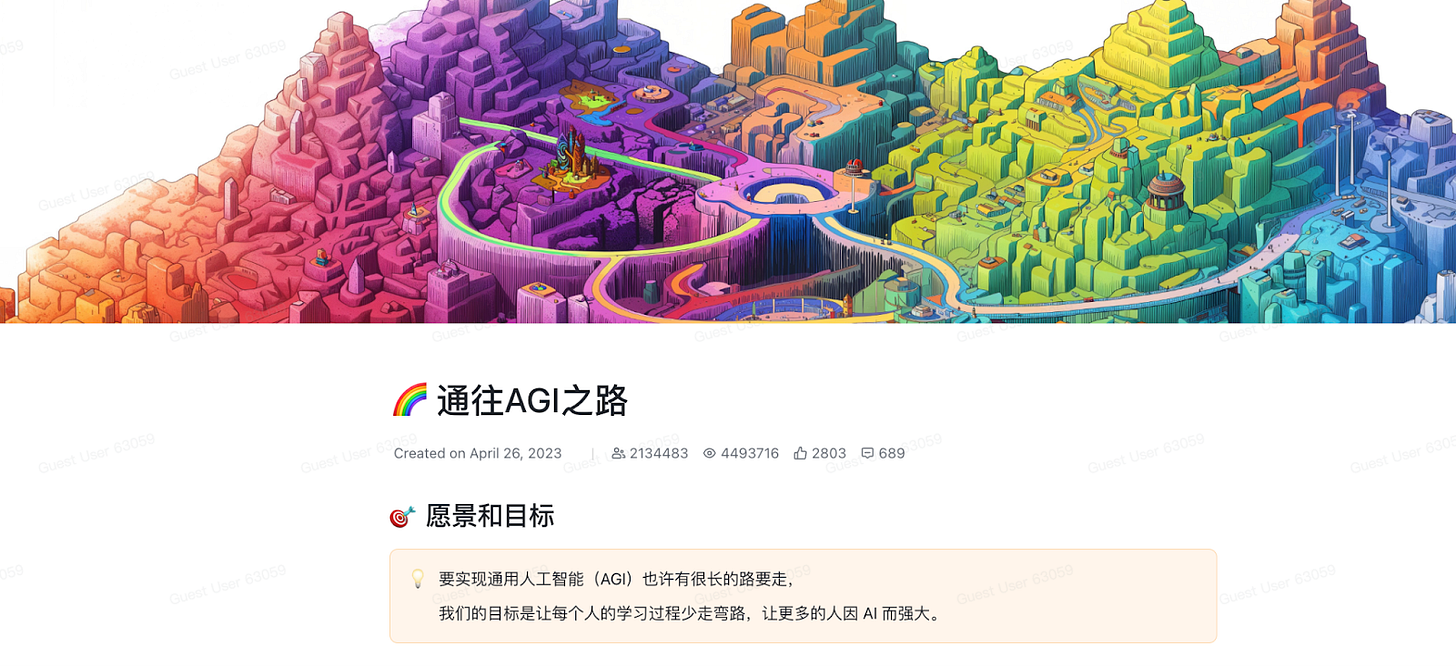
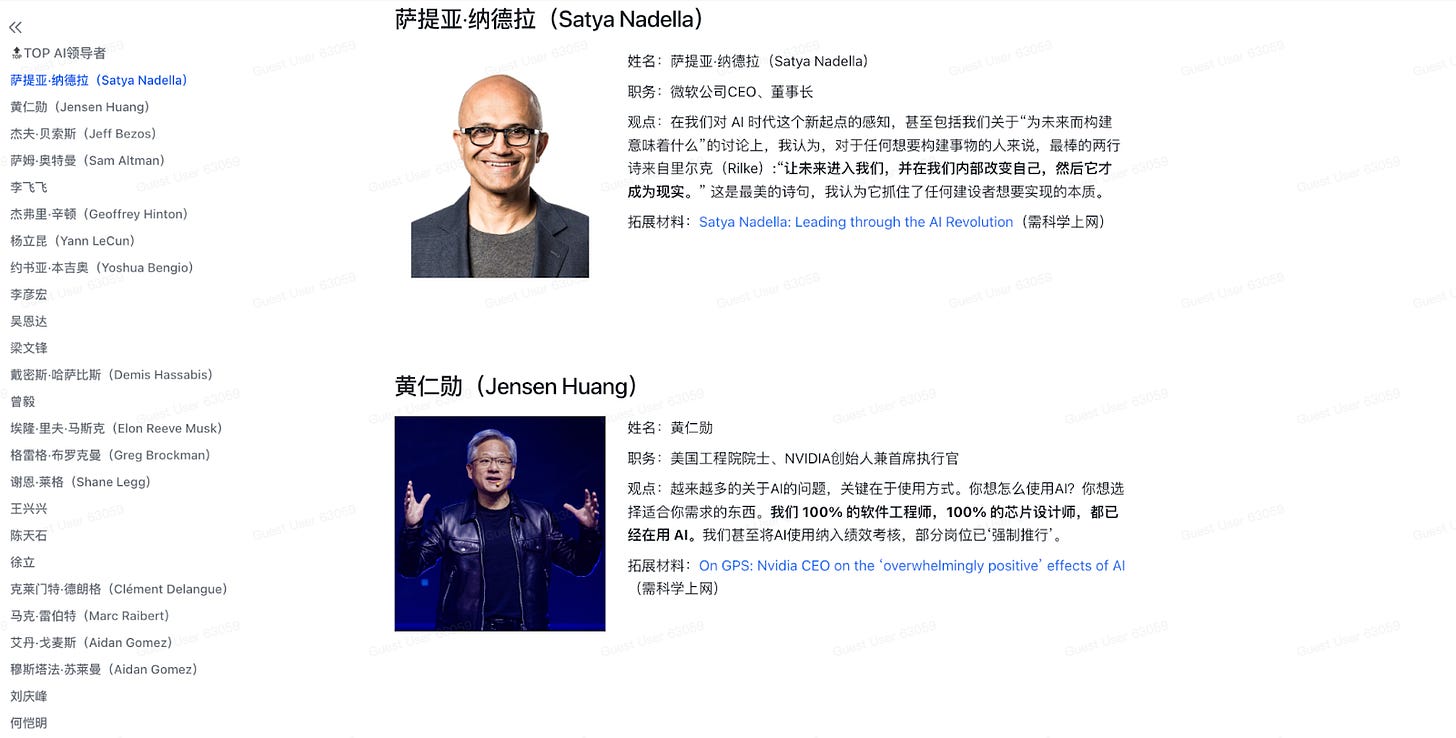
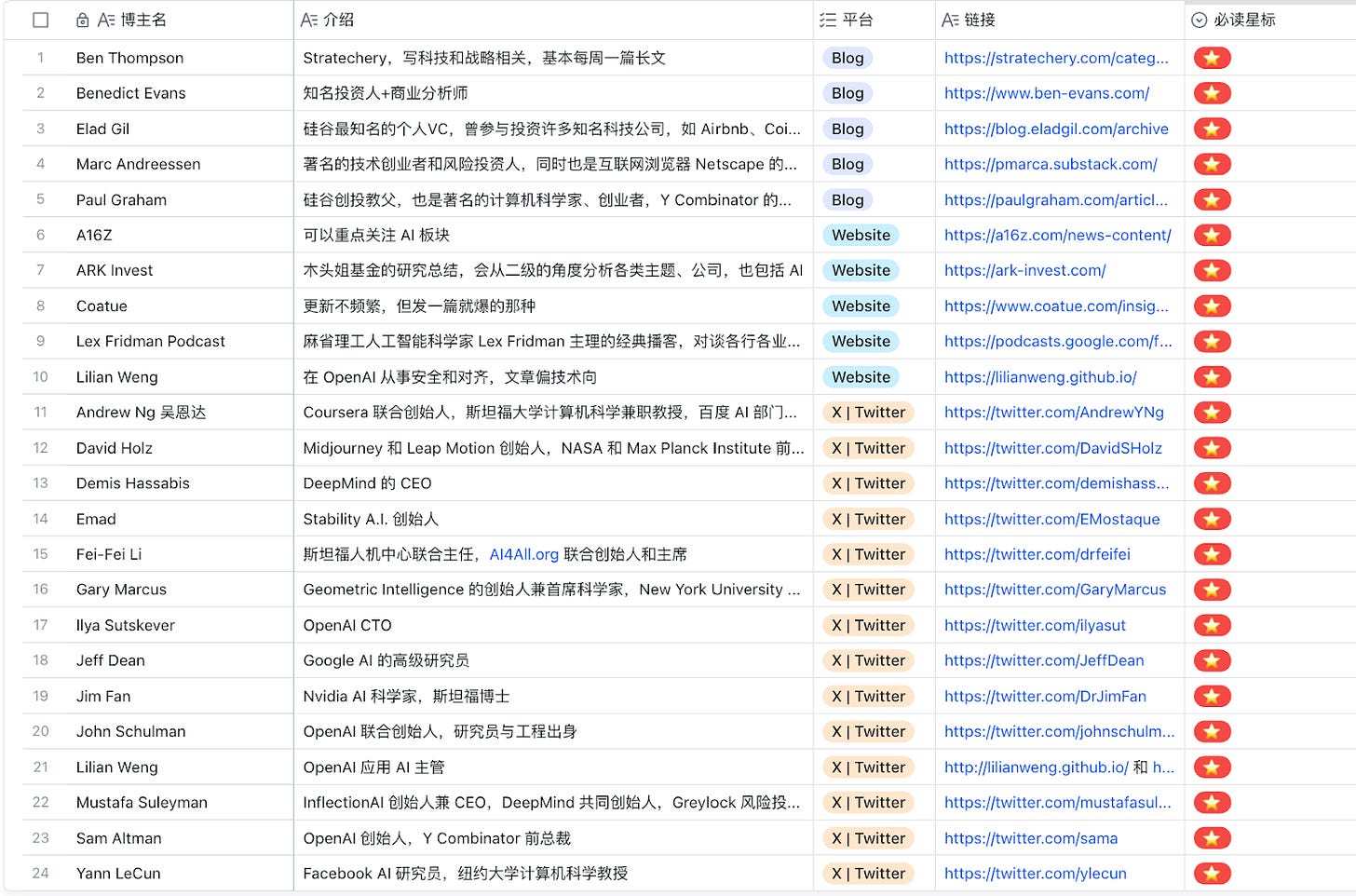
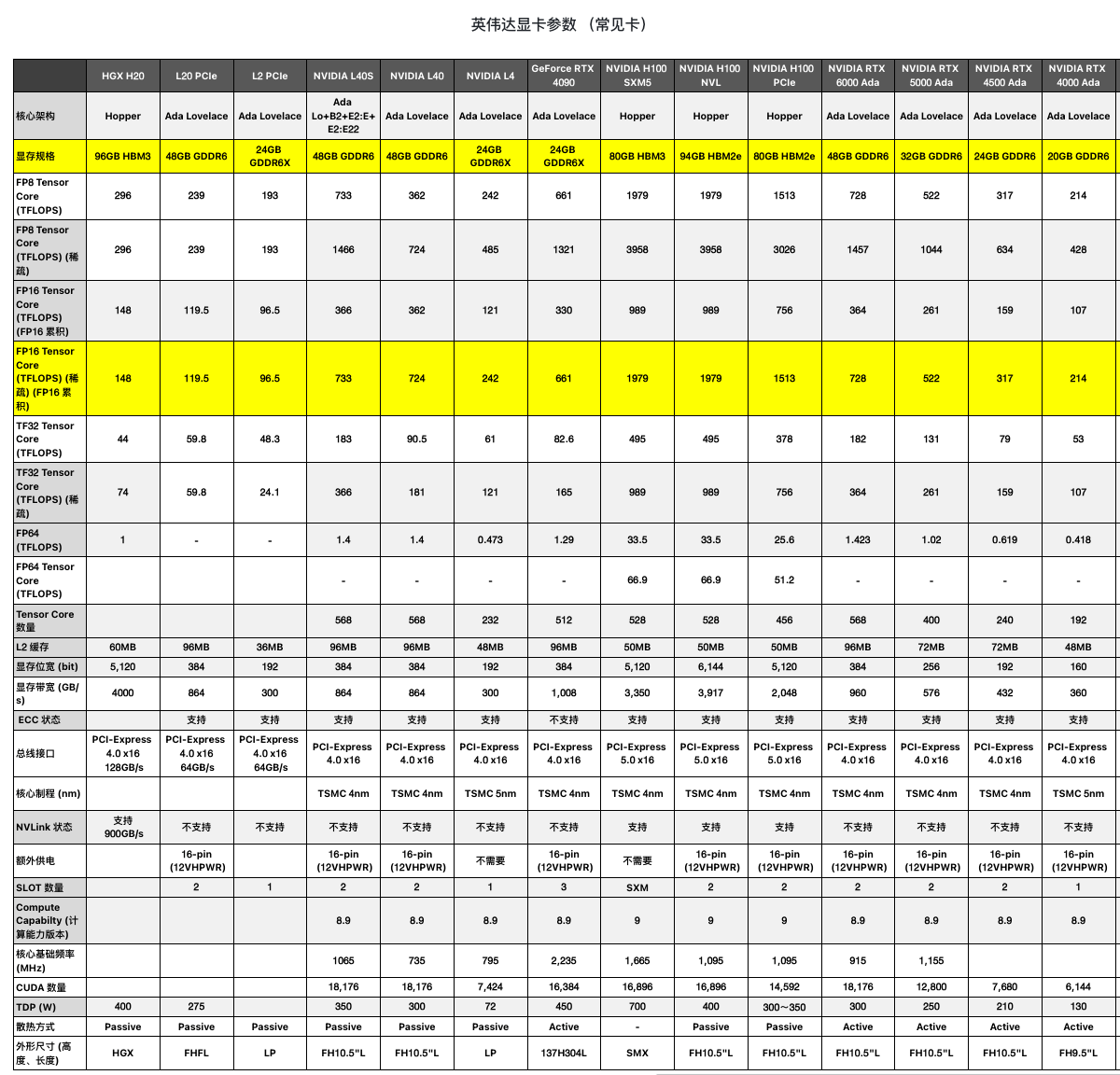
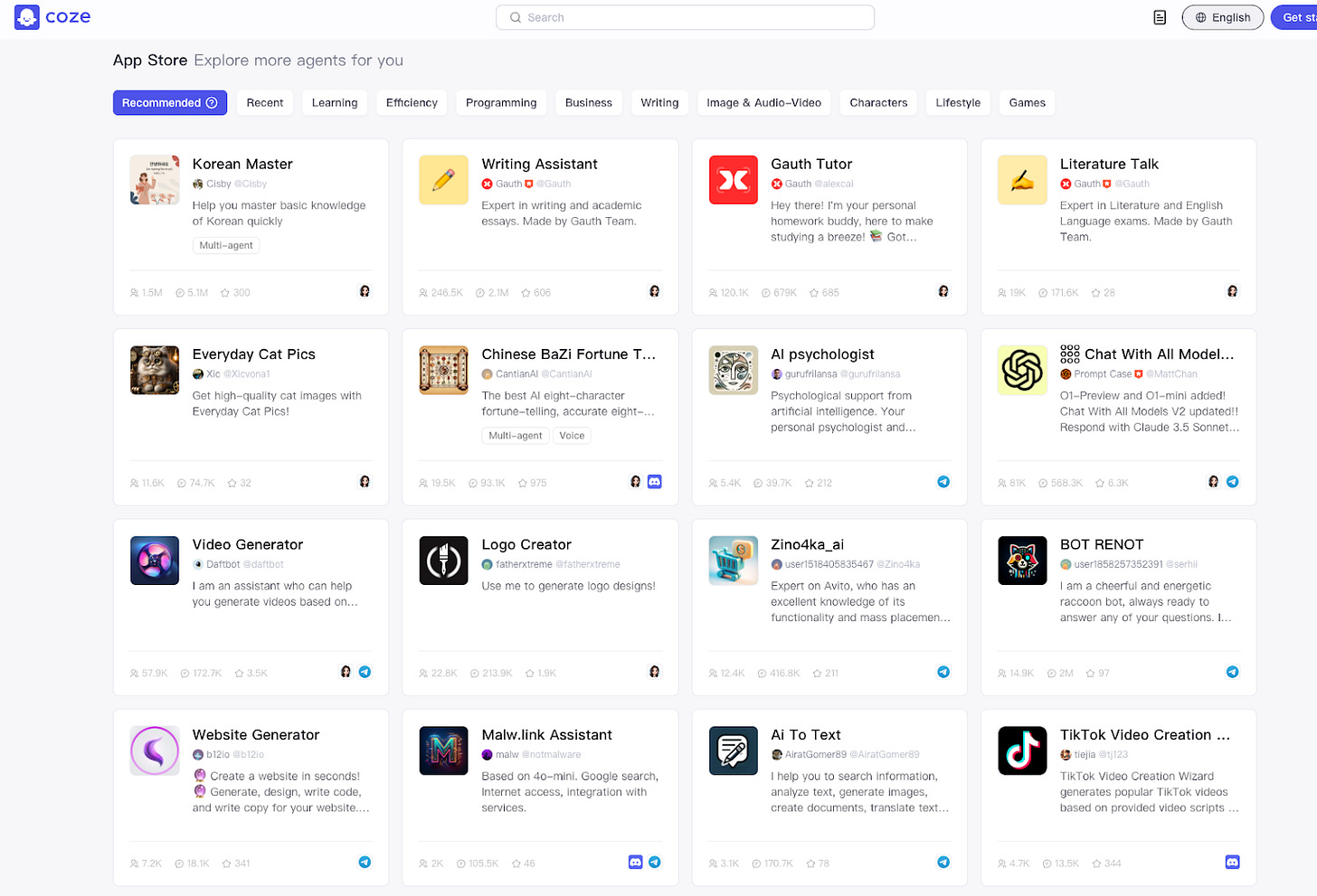

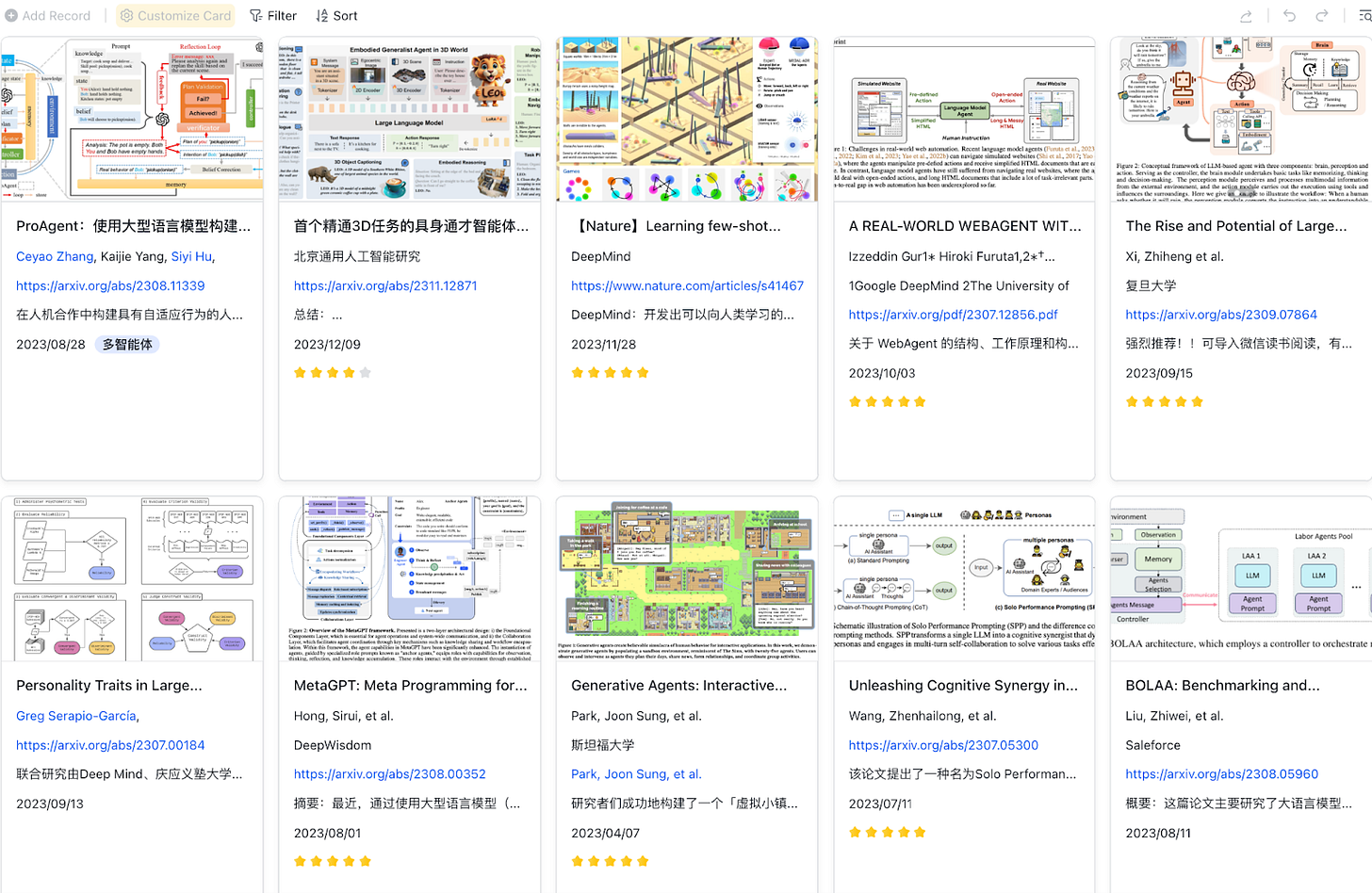

Hey, great read as always. Your insights into the cultural nuances behind 'AGI' in China are incredibly perecptive. It really highlights how crucial it is to define our terms when discussing such broad concepts, a challenge we often face even in academic settings here in Europe. Thanks for this important perspective.
You should also pay attention to footnotes as the best answer to your question is found in footnote 5. That is about as good as it is going to get describing the methodology used to create the leaderboard. Wikis are not known for their academic rigor. Qian Zilan wrote a good article.